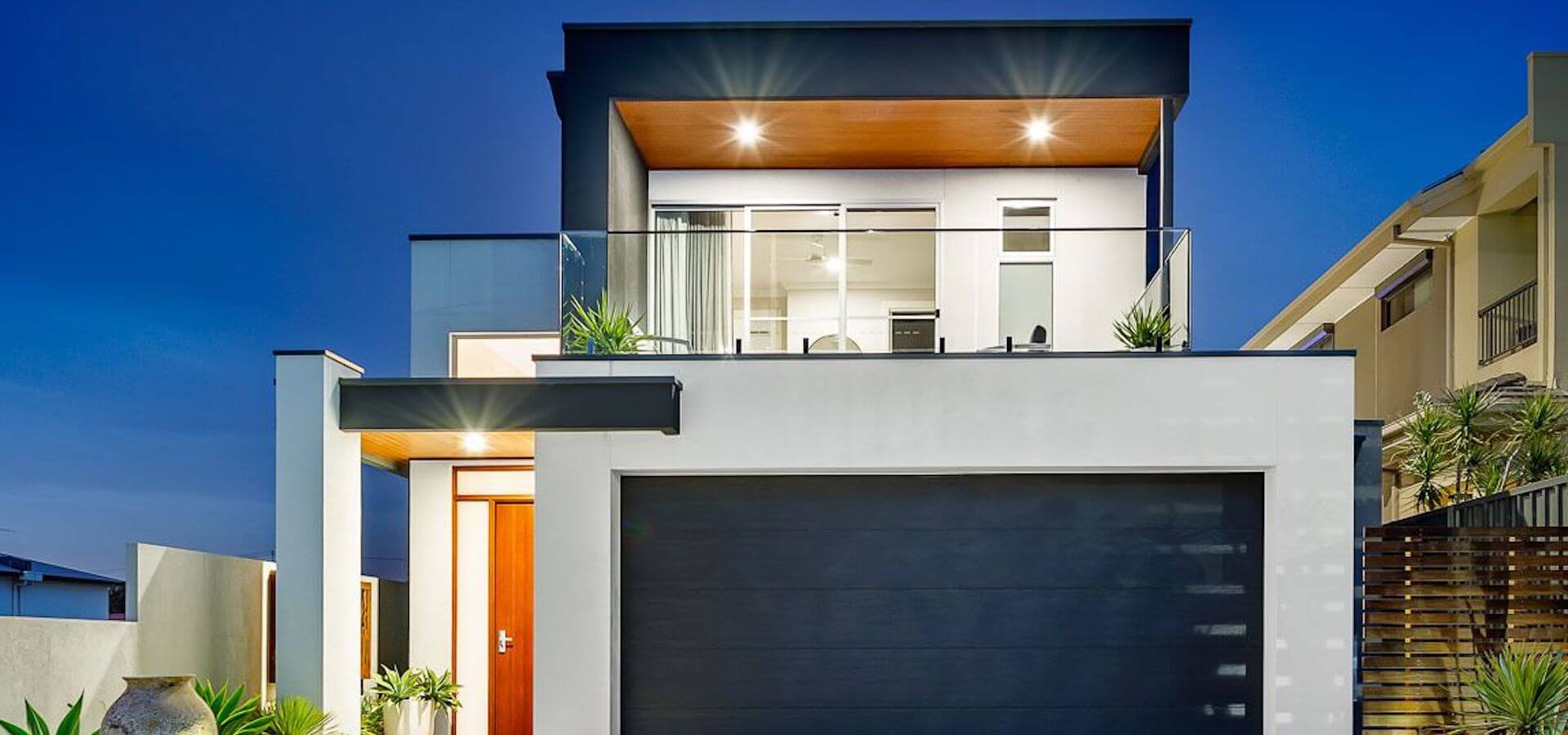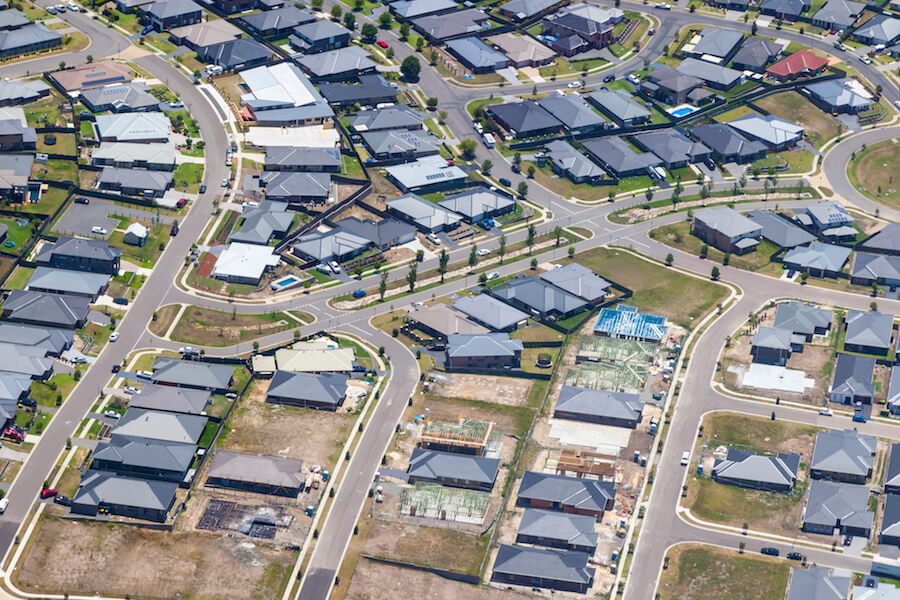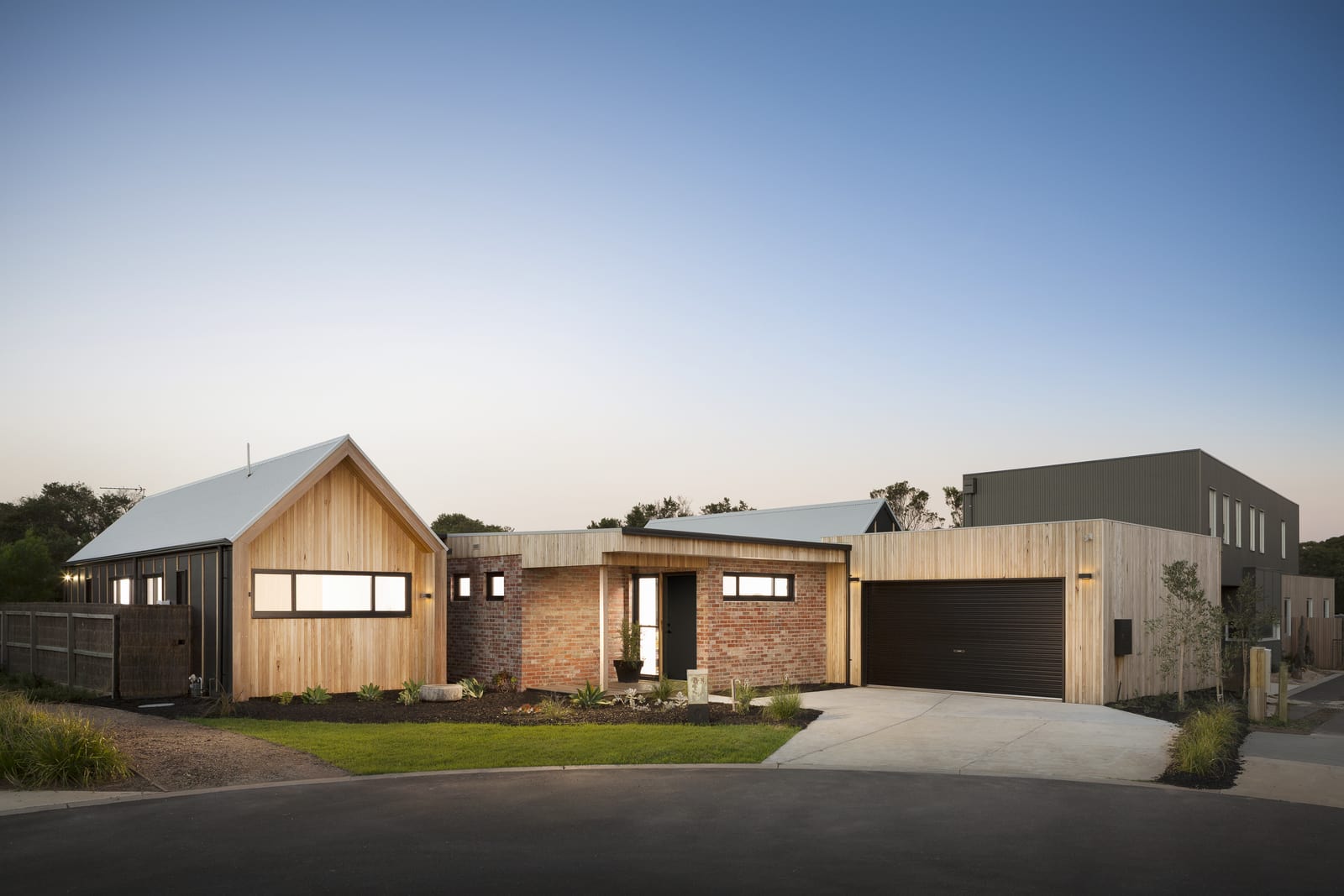If you could build any house with no restrictions, what would it be? An incredible mansion? A quaint little cottage? A grand palace with all the bells and whistles? A sensational penthouse with an epic view of the clouds?
You get the point. Everyone’s dream house is different.
And a custom-designed dream house is also expensive, right? Or is it possible to get that dream lifestyle and home with a considerably less painful price tag?
The answer is yes – if you take the smart approach to building a new home.

Topics in this article:
What is smart design?
It’s easier to tell you all about smart design if we just remove the word ‘smart’. With the bank account balance of a billionaire, designing a dream home is easy. Check out these spectacular Aussie trophy homes to see how it’s done.
But it’s also possible to custom-design something that will really supercharge your dream lifestyle without leaving you penniless.
It’s time to put the word ‘smart’ back in there because smart design is actually just design done cleverly.
We’re talking about things like budgeting, prioritisation, efficiency and being realistic in terms of expectations and execution.
Transforming lifestyles and realising dreams through smart design is my absolute passion, and I’ve whittled down my approach based on years in the building and design industry to the following ten key smart design priorities.

10 ways smart design will make your dream home achievable
1. Analyse your needs.
It’s easy to get carried away with a mega-mansion that Dr. Dre would love. But do you really need a moat and a room for your shoes? It’s a good job you don’t because you don’t have $50 million to spend either.
Luckily, the first principle of smart design is to get serious about why you’re building this house. The answer: to enhance your actual ideal lifestyle. So, don’t lose track of that mantra.
Five bedrooms and three bathrooms may sound grand, but your Golden Retriever and goldfish don’t really need their own rooms and showers, do they? In fact, plenty of designers recommend multi-purpose rooms to add further efficiency to that super-smart floorplan while keeping costs down.
2. Lifestyle concessions.
As suggested above, you’re not Dr. Dre, so you don’t have the dough to blow on a crystal chandelier in every room. But, mercifully, you don’t even want that anyway.
It’s all too easy to blow your budget on features that don’t even factor into the way you live every day. So, start with what you and your family need most when you wake up on a Monday morning, and go from there.
For example, if your kids are a little older, it may make sense to add a secondary hallway to access their bedrooms for additional privacy or a kitchenette off their room to foster greater independence. Yes, it adds pricey square metres, but it’s a lifestyle choice that actually means something valuable to you.

3. Prioritise.
Indeed, the careful setting of priorities is key to achieving your dream lifestyle through affordable smart home design. So, while it seems like an extra hallway is adding extra square metres, what you’re actually doing is prioritising how your design allocates the square metres that matter most to you.
For instance, if you’re designing something that will get your young family through its first decade, it might not make sense to blow square metres on massive bedrooms. Instead, that area could be better re-allocated to a big or extra living space that means your first home is also ideal for entertaining family and friends and provides plenty of space for the kids to play freely.
But before you even get to extra hallways and smaller bedrooms, put the non-negotiable costs including encumbrances, council regulations and developer requirements right at the top of the priorities list. Only then should you start designing with an efficient, streamlined process. It may mean your design is not 100 per cent perfect, but at least you’ve factored in the necessities you can’t avoid before you’ve spent extra money on ideas that can never come to fruition.
4. Thrifty selections.
It is possible to save big chunks of money on your new home by not automatically opting for the premium finishes, options and upgrades on absolutely everything.
Yes, there are definitely upgrades that will achieve your lifestyle ambitions and look your desire. But there are also super-expensive premium options that you can just as easily forgo and never regret. That’s because the ‘shiny upgrade’ doesn’t always translate into ‘extra beautiful’ – and a truly beautiful home is more than achievable through smart design, simplicity, the personal touch and (dare I say it?) love (and you can always change the taps later anyway!).
5. Minimal wasted space.
What do hallways, bathrooms, laundries and butler’s pantries all have in common? The answer is space. Or, more accurately, potentially wasted space.
All too often, people designing their ideal home think bigger is always better – because in the pages of a glossy magazine, that’s frequently true. But these sorts of rooms can also be tailored in more practical way, skillfully trimming the useful area and your bottom line.
6. Engage a building expert.
It’s not every day that you get to quote Julius Caesar, so here goes, ‘experience is the teacher of all things’, and when it comes to smart design, this is doubly true.
Teaming up with truly experienced professionals who know how the building industry operates from the bottom all the way to the top is worth its weight in gold – and measured in dollars saved. These seasoned pros seamlessly and constantly connect price with good design, knowing exactly when and where to push the limits within the confines of your chosen budget.
As suggested earlier, a beautiful premium upgrade can often be tempting, but sometimes the builder’s standard finish is almost as good – and after a week or two, you’ll forget that spending a lot more could have got you something just a little better. And the more experienced the guys you’ve teamed up with are, the more gems of advice like this they are likely to offer.
7. Seek out expertise.
Similarly, there are plenty of ways to reduce costs in the right areas – and, like building experts, expertise is definitely not an area to skimp on.
Building sites can be truly complex, so by cutting corners and saying no to industry-leading professionals like engineers, surveyors and architects you can be left fighting against the site rather than for it – and blowing extra money and adding unpleasant complexity such as retaining walls, cut and fill, and the like.
8. Efficiency and clever design.
It’s when you combine standard builder’s offerings with smart design and a constant eye on efficiency that even more dollars are left in the budget and in your hip pocket.
Let’s take the windows as an example. While some might pick a bigger size, don’t forget that you are then likely to take a double-hit on the wallet with more expensive window coverings.
Instead, play around with the window positioning’, for instance by strategically capturing more natural light and the best view of the backyard rather than the easy option of a big, commercial window with a corresponding price-tag. In fact, strategically placed features like windows can save expensive square metres under the roof by tricking the eye and bringing the outdoors in.

9. Factor in furniture.
Imagine designing a car without knowing where the engine will be. It will give you a good idea of how designing a home without even contemplating the ideal layout for your furniture might turn out.
Smart designers will sit down with their clients and a sketchpad to map out the ideal location of couches, fridges, beds and desks. Equally smart clients will listen attentively to the opinions given by the seasoned expert, who probably knows more than they do about how much space is needed on either side of the bed or for the sectional lounge.
10. Everything else.
Finally, those who forget to factor in driveways, perimeters, flooring, air conditioning and even those handy extra electricity outlets until after the basic design is done are just not taking their smart design seriously enough – because it can all mean extra dollars that add pressure to your smart budget.
So that’s how it’s done! Seriously smart design is the best way to maximise your ideal lifestyle and build a home that is customised to your taste, your desired standard of living, and – above all – your budget. With these tips, hopefully, you can make your dream home a reality.





Thanks your shared! I hope you will continue to have similar posts to share with everyone! I believe a lot of people will be surprised to read this article!